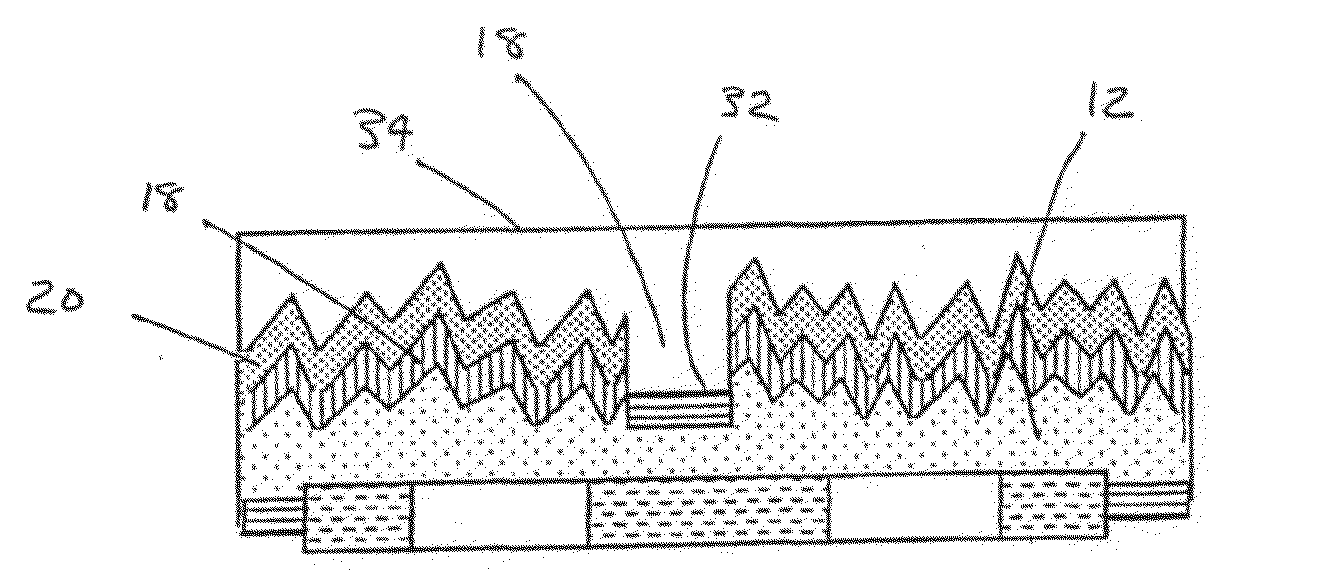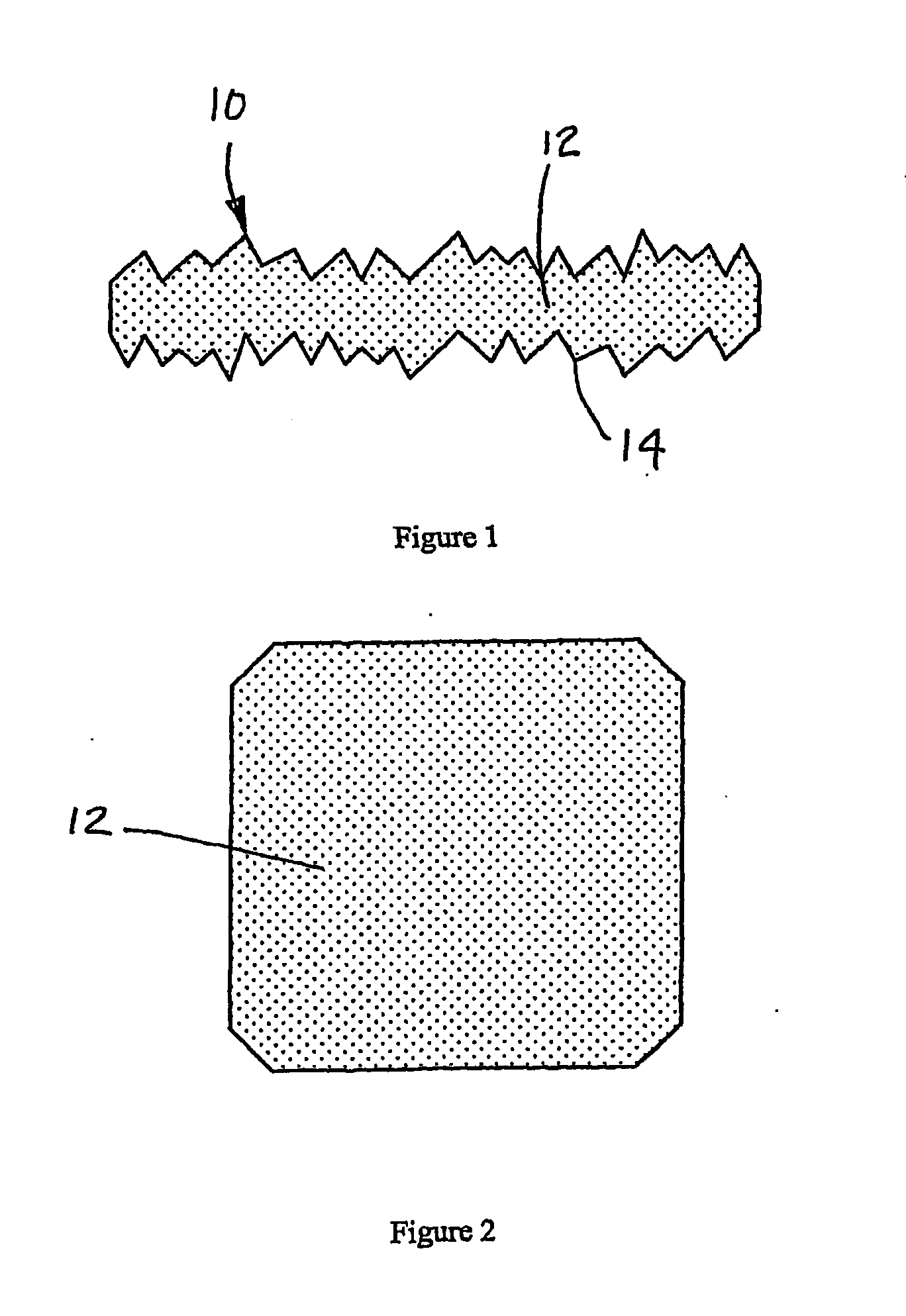Photovoltaic Cell and Production Thereof
a photovoltaic cell and photovoltaic technology, applied in the direction of photovoltaic energy generation, basic electric elements, electrical apparatus, etc., can solve the problems of limited use of photovoltaic cells, general neglect of current, and a number of drawbacks of methods, so as to reduce surface metal contacts, good efficiency, and good absorption
- Summary
- Abstract
- Description
- Claims
- Application Information
AI Technical Summary
Benefits of technology
Problems solved by technology
Method used
Image
Examples
Embodiment Construction
[0085]FIG. 1 shows a cross-section of a cell 10 in accordance with an embodiment of this invention. The photovoltaic cell 10 comprises a textured substrate, for example p-doped With boron, 12. The texture is symbolically depicted as 14.
[0086]In FIG. 3, a textured, n-doped first layer 18, formed by, for example, phosphorus diffusion, is present on the front surface 16, of the substrate 12, producing a p-n junction where the boron doped substrate 12 meets the n-doped layer 18. A second surface coating 20 is disposed over the first layer 18 of the cell on the edges 22, the front surface 16, and the periphery 24 of the back surface 26.
[0087]After forming the first layer 18, and second surface coating 20, the device 10 is cleaned and etched (see FIG. 5) so as to remove unwanted parts of the coating 20.
[0088]As shown in FIG. 7, grooves 28 are formed in the substrate 12, through the layer 18 and surface coating 20. After forming the grooves 28, a cleaning process is undertaken so as to rem...
PUM
| Property | Measurement | Unit |
|---|---|---|
| thick | aaaaa | aaaaa |
| thick | aaaaa | aaaaa |
| thick | aaaaa | aaaaa |
Abstract
Description
Claims
Application Information
 Login to View More
Login to View More - R&D
- Intellectual Property
- Life Sciences
- Materials
- Tech Scout
- Unparalleled Data Quality
- Higher Quality Content
- 60% Fewer Hallucinations
Browse by: Latest US Patents, China's latest patents, Technical Efficacy Thesaurus, Application Domain, Technology Topic, Popular Technical Reports.
© 2025 PatSnap. All rights reserved.Legal|Privacy policy|Modern Slavery Act Transparency Statement|Sitemap|About US| Contact US: help@patsnap.com



